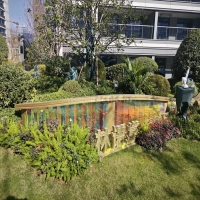Welcome to the website for landscape facilities products and knowledge.
What are the best joinery techniques for metal landscape trash bins?
When it comes to constructing durable and long-lasting metal landscape trash bins, selecting the right joinery techniques is crucial. Metal trash bins face constant exposure to weather, heavy use, and potential vandalism, making robust joining methods essential. Here are the top techniques to ensure longevity and structural integrity:
1. Welding (MIG/TIG):
- MIG (Metal Inert Gas) welding is ideal for thicker metals, providing strong, durable seams.
- TIG (Tungsten Inert Gas) welding offers precision for thinner metals, creating clean, rust-resistant joints.
2. Riveting:
- Ideal for areas requiring disassembly or repair. Stainless steel rivets resist corrosion and add strength.
3. Bolt and Nut Fastening:
- Allows for easy replacement of damaged parts. Use galvanized or stainless steel hardware to prevent rust.
4. Spot Welding:
- Efficient for sheet metal bins, creating small, strong welds without warping the material.
5. Adhesive Bonding:
- High-strength metal adhesives can supplement mechanical joins, reducing stress on welds or rivets.
For optimal results, combine techniques like welding for structural seams and riveting for removable panels. Always use corrosion-resistant materials and finishes to extend the bin’s lifespan in harsh outdoor environments.
Related search:

Recommendation
Metal and acrylic color-changing combined curtain wall for large-scale public landscape facilities